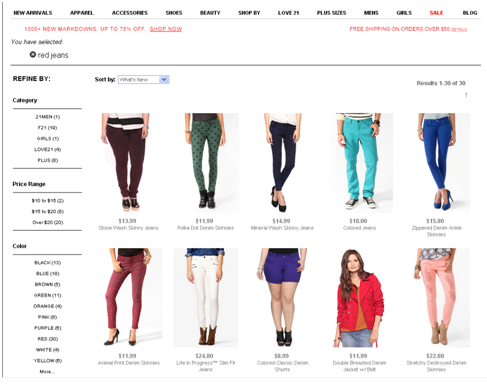
Filtering is an obvious clause while you design an eCommerce site. Every retailer wants to expand the business and if the volume of business would increase the retailer has to keep more and more data in his database. If the retailer would like to create a volume like a shopping mall, what is an utmost dream for a shop owner, he has to keep more products of different categories for the choice and requirement of different customers. To be precised, an online store or an professional eCommerce site designed like a store provides the opportunity to the retailer to gain the volume of sale like a shopping mall owner.
But here comes an issue while design or develop the site how would the huge number of products will be arranged so that one of customer could assort to his choice in finer and shortest way? The option for different filtering is important to choose the right product, what exactly the customer wants.
Technically there are two kinds of filtering – Information filtering and Collaborative filtering.
Information filtering: Information filtering (IF) is one of the methods that are rapidly evolving to manage large information flows. The aim of IF is to expose users to only information that is relevant to them. Many IF systems have been developed in recent years for various application domains. The purpose of filtering application in eCommerce is filtering for e-commerce applications that address products and promotions to potential customers only, and many more. The different systems use various methods, concepts, and techniques from diverse research areas based on Information retrieval facilities with logical Intelligence, and most importantly behavioral science of the customer visiting or the group of prospected customers. Various systems cover different scopes; have divergent functionality, and various platforms.
Collaborative filtering: Collaborative filtering is a process used to match data of one user with data of similar users, based on purchase patterns, in order to generate recommendations for the user for future purchases. The larger online stores like Amazon is an example of a company that uses collaborative filtering in order to make its recommendations, based on a customer’s prior purchases and the purchases of those who have purchased similar products. This is how the market is segmented, giving more importance on behavior of a particular customer, avoiding conventional parameters of demography and psychology.
Read more: Wodpress plugins for E commerce site
Future of E commerce
To get an easier concept, when a customer enters to a store the entire intention of the store manager goes for what he wants. If somehow, the piece of the product, is not available the salesperson shows a lot of others on similar category. The motto is not to lose the customer but make out a sale with the particular product or the product nearby on the same category keeping the customer’s satisfaction perfect.
The same goes with the online store but as these sales procedures take place through the utility applications of the eCommerce site. The procedure to lead the right customer to right product is done by the different filtering process. On the entrance, the customer himself gets filtered by the system according to his language, age, product specification or currency. Then according to the store’s database the recommended product could be chosen by several filtering categories like filter by product name, filter by brand or make, filter by any physical specification, filter by color, filter by size, filter by price, filter by mostly searched/popularity, filter by recent search and many more. The customer can choose from the ranges of these filtering categories.
After the customer’s visit on the site, may be the sale is made or not, the filtering applications use their artificial intelligence, keeps an eye on what the customer is looking for or which product he clicked in. Accordingly they create a temporary database of products filtered by the customer and send several promotional banners to the customer’s electronic pages to promote product(s).
Read a blog on: e-Commerce site – characteristic features
Read more: Custom eCommerce website development

